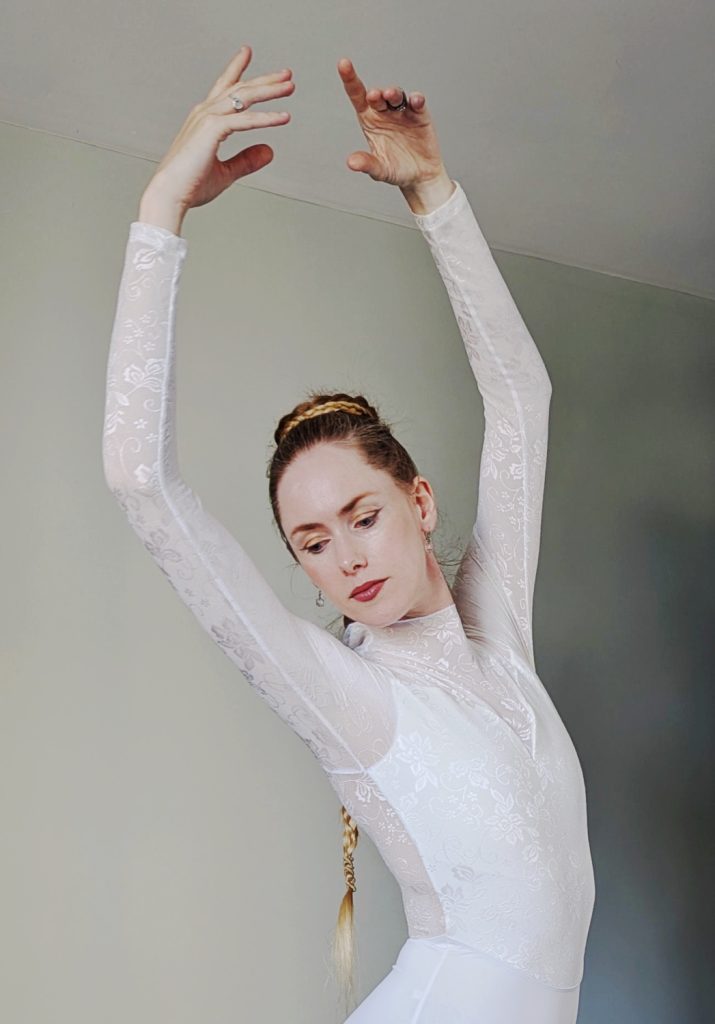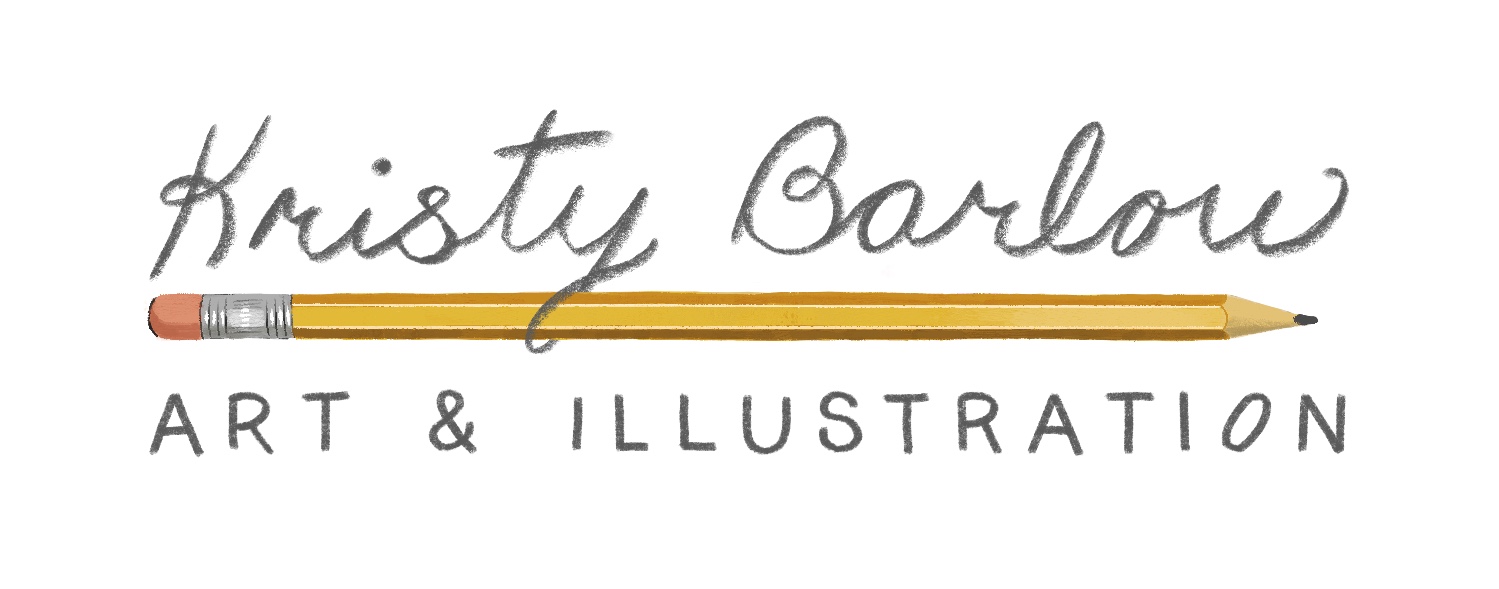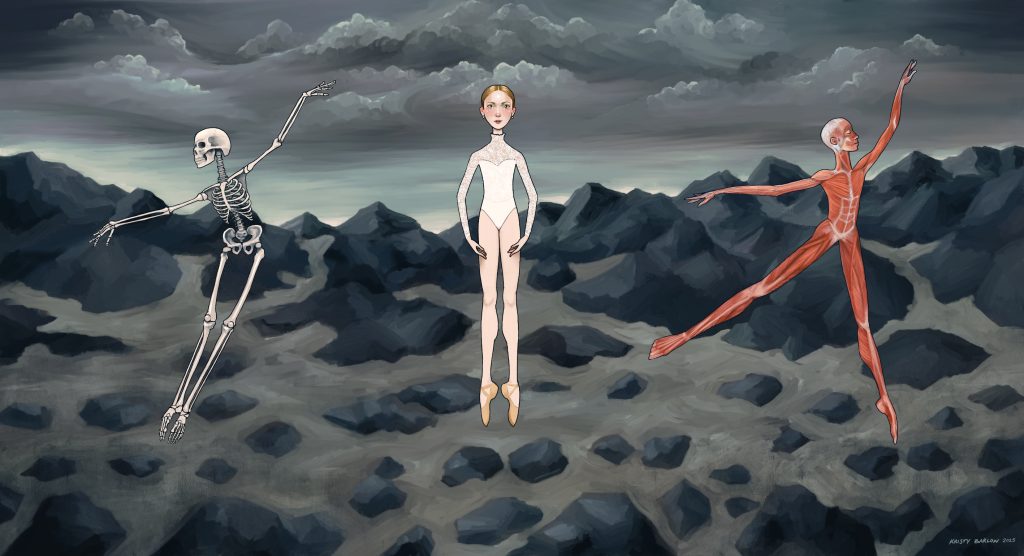
The summer solstice marked the occasion. It was a new beginning. Though judging by the colour-stripped sky and the cold, wet air, you wouldn’t have guessed it was the first day of summer. Instead it was a classic ‘Juneuary’ day, as people like to refer to it here in Vancouver. I closed my eyes but they twitched nervously in resistance as I tested my balance on one leg. Breathing in and out slowly, I shake my limbs in a futile attempt to ease the tension. I’m trying to fool my body into believing there’s no need to be anxious, but it’s a lot smarter than I ever gave it credit for, so my heart continues to race as if to say “nice try”. It didn’t help matters that it was my least favourite part – that brief period of time when there are no rules, the room is full of noisy chatter, dreaded small talk, and people coming and going in all directions like it’s an all-walk crosswalk. It felt like chaos to my nervous system, but it was all worth it for what came next. The clock would indicate it’s time to begin, the door would close, the teacher would greet us, everyone would fall silent and space themselves evenly along the barres. Order and predictability would be restored and my discomfort would be replaced by a childlike enthusiasm to dance. But today was different, because it had been eight months since I’d set foot in the ballet studio, eight months since the day it happened. My brain and my body remembered, and I was genuinely terrified. At the same time, I was returning to a place that felt like home, a place I used to visit religiously twice a week. A place that was so important to me that returning there after so much time had passed felt like stepping into a dream – quite literally, since my sleeping brain would regularly attend imaginary ballet classes. My mind cycled through everything that had happened since September last year and I began to realize that I was not quite the same person anymore, because the path that had led me to this point of return was – to put it simply – one of the most difficult experiences of my life.
The Meltdown
The situation that set everything in motion that September was one that, for an autistic person like myself, quite thoroughly spelt disaster. Crowds of people, train delays, being late when it’s against the rules, failure to carry out a routine, and inability to engage in an essential element to my well-being; my ‘special interest’. I was on my way to ballet class and running late for reasons that were outside of my control. The funny thing is, I knew I wouldn’t make it in time. As the trains sat at each station for minutes on end, as more and more irritated people squashed themselves into the train cars, I obsessively checked my watch and saw the possibility of ‘I can still make it’ gradually dwindling, and I knew at a certain point it would be unequivocally impossible to make it on time, even if I ran. But all rationally had gone out the window, so once I finally arrived at my station, I ran anyway.
The other funny thing is, when you have so many obstacles in your way it becomes very difficult to develop the speed necessary to run. So it was an awkward and panicked manoeuvre I was undertaking where I switched from being stationary on the train for about an hour, to suddenly attempting to run on tip toes while weaving myself in and out through a dense crowd. It was the kind of activity that undoubtedly would have called for a warm up before executing. So when I began my frantic ascent up the escalator, that’s when I felt the calf muscle strain happen in my left leg. It was the same muscle that I seemed to injure every couple of years or so. I was so stressed from rushing that it took me awhile to recognize the irony of what was happening; that in rushing to get to the class I inherently knew I was going to miss, I would end up missing far more classes by injuring myself. I eventually slowed down because the encroaching pain in my leg would no longer allow me any speed, but I continued to climb the escalator and once I reached the top I stepped off to the side, away from the moving crowd, and stood facing a wall. An odd sight for some perhaps, but a logical necessity for what I knew was about to happen.
And so began the meltdown.
On cue came the racing heart, hyperventilation, sweating, cognitive difficulty, repetitive tapping, and the frightening sense that my surroundings were caving in on me. I could sense someone approaching me – an empathetic woman who had noticed my distress asking “Are you okay?”. But my ability to communicate or interact had deteriorated, so I turned and ran away from her like a startled animal, finding a secluded spot where I again stood face to face with a wall. In denial, I repeated out loud “No, no, no, no”, more distraught that I was missing class than about the state of my leg. I cried for some time, releasing the overwhelming multitude of emotions I was feeling, until eventually my breathing and heart rate calmed. Once it was over I hobbled back towards the train to go home, keeping my eyes down, looking at no one and nothing, withdrawing inside myself for safety like a hermit would retract in their shell.
The Breaking Point
After a month of recovery I was desperate to dance and decided to return to class. I was well aware of the high risk of re-injury so it would be a sensible return where I would ease myself back into it. There was absolutely no way that I would participate in grand allegro at the end of the class – that would be reckless. October 19th, there I was, back in the studio. The place where I would leave my responsibilities and worries at the door and spend the next hour and a half escaping from everyday life. It was one of the very few moments in my week where I felt beautiful – by my own standards, not by society’s superficial definition of sexualized, air brushed faces and bodies. Here in the studio beauty was defined by artistry, elegance, control, strength, and stamina. My apprehension about my leg ensured that I took things slow and gentle at the barre, modifying exercises to decrease the load on my muscle. But it was absolute bliss being back at the barre. I hadn’t felt so alive in weeks. And I wanted more.
The endorphins running through my veins were getting the better of me. My muscle felt fine, so I carried on to participate in my favourite part of class; petit allegro. Now, if these jumps were a drug, then I would be an addict. Getting a taste of my favourite drug was the first mistake, instigating a greedy mindset. My second mistake was doing the last combination of the class – without even thinking. That anxious, cautious part of my brain had well and truly been switched off. It seemed to be fine at first and I was in heaven, glistening in that thick layer of happy sweat that I’d so missed. Soon I’d be walking out with that post-class buzz that would leave me feeling confident for the rest of the day. My brain was a kaleidoscope of happy chemicals as I flew across the dance floor.
Until we repeated the combination.
Only a minute or two before the class would conclude I leapt into the air as high as I could go, feeling as though I were suspended in euphoric flight. And very abruptly my state of euphoria was replaced by one of the most disturbing experiences of my life: my calf muscle snapping like an elastic band. The sensation of my muscle popping and tearing apart left me in a state of shock, and the horror of my final mistake grew with every second. If there was immediate pain, it was entirely masked by shock and adrenalin, but the dread that began as a small dark cloud and grew into a monstrous storm was unmistakeable. I knew I had injured myself severely this time and that by pushing myself too hard I had made a small problem monumentally worse.
My leg felt disconcertingly strange and I couldn’t put any weight on it at all. As I sat in the reception area and waited for my husband to pick me up, I put on my usual facade of calmness while staff and fellow students shared words of support. But inside I was ready to break down. What the hell had I just done to myself? As someone who pedantically tries to prevent mistakes, how could I have made one of this magnitude? I was ashamed of my uncharacteristic impulsivity. As the adrenaline wore off, it was replaced by the hard truth of pain. All I could do was cradle my poor, defeated leg and wait for help. When my husband finally arrived, a staff member at the dance studio helped me to get down the stairs on one leg with my arm around their shoulder. I apologized for the inconvenience, but they assured me they were happy to help and explained how they’d had to carry someone down the stairs recently due to a knee dislocation. Dancing was very serious business.
It wasn’t until I was safely in the car with my husband that I let myself break into tears. The atmospheric river that had been flooding the city that day seemed like a bad omen I’d chosen to ignore. Realizing that I had massively prolonged how much time I’d have to take off from ballet, I was devastated all over again. But I would soon learn that ballet was the least of my concerns, because I had no idea at the time that I’d end up being on crutches for two months, that my mental health would deteriorate severely, or that a year later I’d still be affected by my injury. Nor did I know that it would eventually become a transformative process of both mental and physical rehabilitation.
Whisper to a Scream
“Listen to your body” is a common phrase used to express the idea that our bodies speak to us, alerting us to their needs. Prior to my injury I had always struggled with my interoception sense (the awareness of bodily sensations and recognition of feelings), which is a common difficulty for autistic people. It also didn’t help that my hyper-focused, tunnel vision brain would view my body’s signals as a bothersome distraction. I could sit at a desk fixated on a task for hours on end and either not realize or intentionally ignore the fact that I needed to eat or use the bathroom until I was desperate or starting to shake due to low blood sugar. If I had any sort of pain I would either become irritated by the inconvenience of it or frightened because I didn’t understand what it meant. My mind and my body felt very separate and there was a real fear that my body could turn on me at any point. This feeling was only exacerbated immediately after my injury and I was suddenly hit with a realization that I had no idea how to properly care for my injured body.
I was certainly no stranger to injury and they were an unfortunate inevitability in both dance and the athletic world in general. It was a risk that came with pushing your body to its limits and striving to reach your full potential. I had injured the same muscle multiple times in the past, but as they were relatively mild injuries, I rarely took them seriously enough and I didn’t understand how each one was a whisper of warning from my body that it was not strong enough to endure what I continued to put it through. I never sought help with my previous injuries because being independent, refusing to ask for help, and fixing problems on my own was how I knew to operate. This injury was effectively my body screaming at me to stop and something that forced me to listen. I knew I was in trouble, so I sought help as soon as I could with a physiotherapist who diagnosed me with a grade 2/3 calf strain. Based on the initial assessment, I was told it would be two to three months of recovery, but as time went on the predicted recovery time continued to lengthen and it became apparent that my injury was much closer to a grade 3 tear, which is the most severe. In addition to that, the fact that I had never rehabilitated my previous injuries to that muscle complicated and lengthened my recovery time.
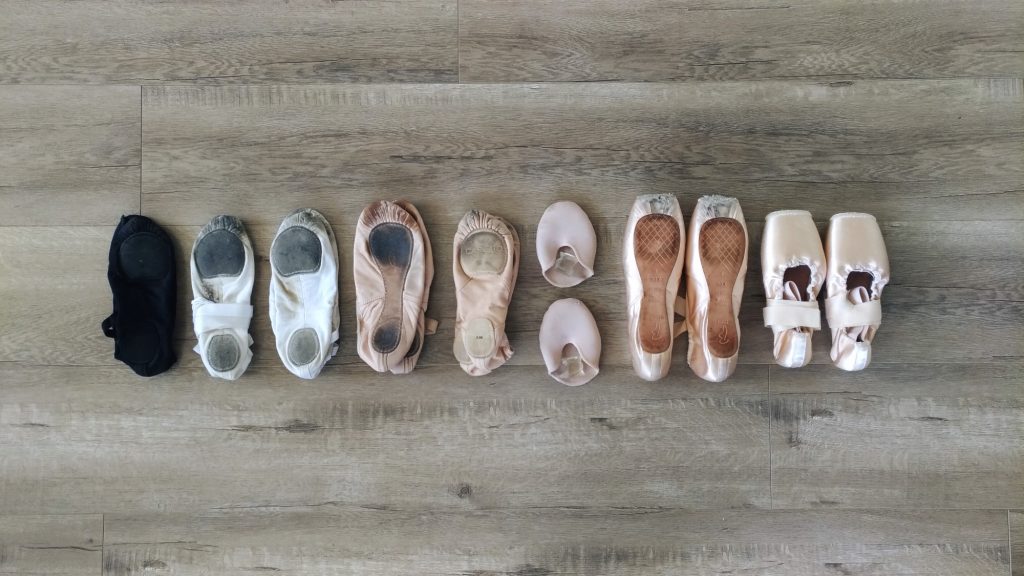
Injured Body, Injured Mind
Undeniably, the physical impacts of having a major injury were awful; the pain, the disability, the muscle spasms that induced flashbacks, and the effect on the rest of my body as it compensated. Carrying around a dangling, injured limb was nothing but misery and it felt like every day I experienced pain in a new part of my body because I had to completely change the way I moved. But even so, what I quickly came to learn was that the psychological impact was even more debilitating than the injury itself. The day after my injury I woke up panicking and distraught, in disbelief about what had happened. It was like I’d woken from a nightmare that had become reality, and for months after that I woke up each morning feeling like I was trapped in that nightmare, unable to escape. The weight of my new reality was so heavy on my shoulders each morning that in hindsight it feels like a huge feat that I managed to get out of bed each day. But some days I didn’t get out of my pajamas, some days I didn’t shower, some days I did essentially nothing but wait for my husband to come home from work so I wouldn’t be alone with my thoughts. I felt like I’d broken into a million pieces and the task of repairing myself piece by piece was so daunting and overwhelming that some days I couldn’t fight, all I could do was let the current take me where it willed.
Before I acquired the use of crutches my only option to move around was by shuffling around on my bum or crawl on my hands and knees like an infant, bringing with it an immediate loss of dignity. The most basic tasks became a daily struggle; dressing, washing, preparing food, and using the toilet. I spent the first two weeks stuck inside on my own, waiting desperately for my husband to come home each day, not only because he would assist me with things but because then I’d have someone to talk to. I sunk into a deep depression, feeling like a burden and watching time passing by as everyone else went about their lives. The days had never felt so long as they did then and my mental state was like a light switch that someone was flicking back and forth, where I would go from feeling neutral to suddenly being a crumpled, crying mess on the floor.
In my third week I optimistically returned to work on crutches, finding many new obstacles like taking transit, using stairs, and carrying things when you have no free hands. But I was relieved to be at work to have something to distract me. By the end of the week though, everything new I’d been doing had become too much too soon for my healing muscle and I regressed, having to take more time off work and finding myself back in the same position where I was stuck at home on my own. That was the moment that the severity of my injury hit me square in the face and, to put it bluntly, that fourth week was one of the shittiest weeks of my life. Trapped inside with nothing but my own self-destructive thoughts, I felt completely alone and hopeless, spending most of the week crying on the floor. My thoughts became so dark at this time that I feared I needed to seek professional help. Thankfully my husband was my pillar and got me through each day, and things eventually began to improve with time.
I was essentially grieving a loss; of function, mobility, self-trust, and fearless freedom in dance. I went through the five stages of grief and every time I had a bad day or a ‘flare-up’, I went through this process all over again. It became a suffocating cycle that wore me down and dwindled my hope. My disability was evidence of my shameful mistake, visible for all eyes to see whenever I left the house, made no more conspicuous than the day I accidentally fell over while disembarking the train. There I sat on the hard ground in front of the train doors, one crutch having fallen in the crack between the train and the platform, and a stranger on either side of me offering their hands to help me up. I had my head in my hand, feeling humiliated and like I was about to give up. I wanted to break into tears but I also didn’t want to burden the people who were trying to help me. So I took their hands, pulled myself up, sincerely thanked them, and carried on. I’d taken everything for granted; dancing, jumping, walking, and simply standing on two feet. Now I could do none of it. It felt like one of the lowest points of my life.
I would look in the mirror some days and it would seem as though I’d aged dramatically. I almost couldn’t recognize myself because all I saw was a beaten down person who’d lost their sense of purpose. I wanted nothing to do with ballet for awhile and the sight of my ballet gear gave me PTSD symptoms. I mistakenly blamed ballet for what I’d really done to myself. But dance was my compass – it was an essential element to my weekly routine and without it I felt lost, hollow, and aimless. I stopped listening to music, I stopped engaging in activities I would normally enjoy, and the anxiety that I felt with so many things was replaced with something far worse; cold apathy – because what did it really matter?
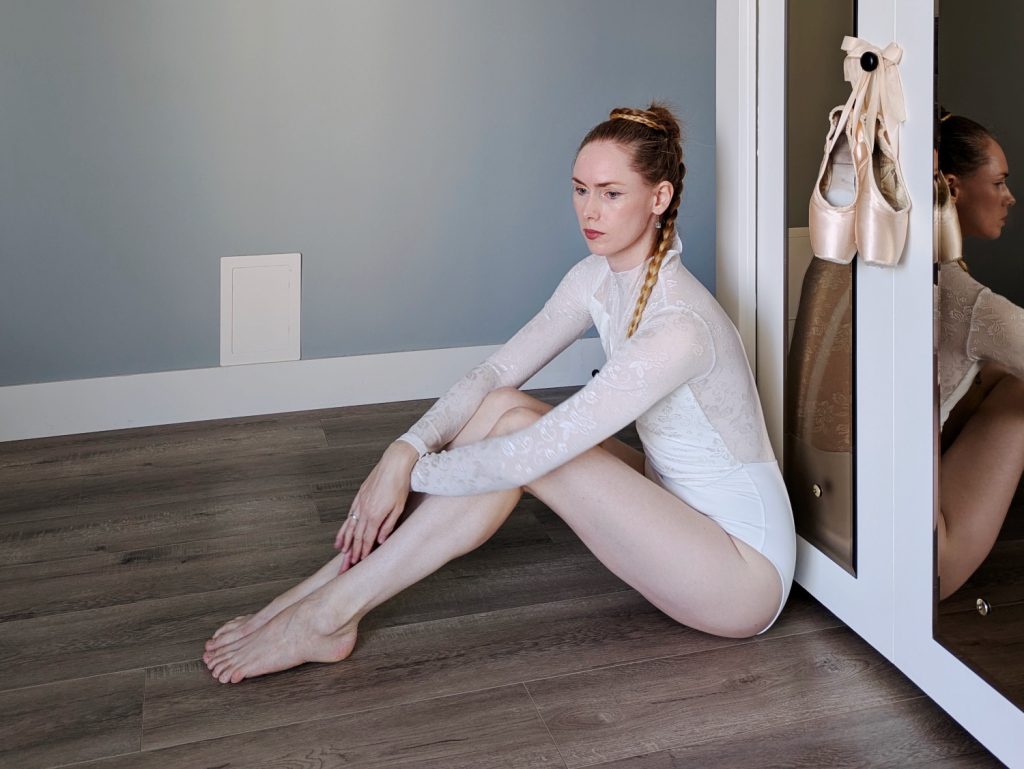
The Crooked Path of Recovery
Like the progress of many things in life, my healing and recovery was far from linear. Instead, it was crooked and microscopic, leading me to believe that I was not getting any better for a long time. If there were noticeable improvements, it was often followed up by a relapse, and this would go back and forth for months, where I would start to feel hopeful only to have it ripped away again. I believed I would never be able to dance again and all the things I used to be able to do felt like impossibilities; literally like magic. To go from doing advanced ballet steps to being unable to put my foot flat on the floor was incredibly jarring, and the idea of being able to walk normally felt so far away from reality that I struggled to even imagine it.
Even though my crutches were assisting me in getting around, I resented them and had many angry moments of tossing them onto the floor. When I finally regained the ability to walk I began thinking about ballet again and was told more than once that it looked like the spark in my eyes had returned. It was a very long process of gradually increasing the distance that I walked each day, starting with going to the end of the block and back – a slow, mundane activity that I had never enjoyed so much in my life. As someone who used to walk everywhere and at a quick pace, it was a humbling experience to be forced to walk so slowly that I had elderly people passing me on the street. This forced me to reassess my relationship with time and to develop an impenetrable patience with my body. When it came to the thought of returning to dance, well, when you’ve already had to wait several months, what’s another few?
The Crucial Role of Physiotherapy
Persevering through eight months of physiotherapy was a huge challenge for both the body and mind. It was a time consuming paradox of tedium and anxiety-inducing struggle that required a lot of trust, patience, and persistence. I took my physio programme incredibly seriously because I knew that regaining full function and strength of my muscle was dependent on consistent rehab. I would get up very early every morning so that I could fit in my exercises before work, as they would initially take me about an hour and a half to complete, with the slow speed and long rests in between sets.
My final session with my physiotherapist was a particularly emotional one as he had become like a friend I’d been leaning on for most of a year – someone who saw me and supported me at my most vulnerable. He not only guided my physical rehab but he also turned out to be my unofficial psychologist, since my rehab was as much mental as it was physical. I came to depend on him for mental and emotional support and I was deeply thankful for his knowledge, genuine empathy, and ability to transform what were some awful days into those of tangible hope and progress.
I had very poor circulation for months from my inability to sufficiently work the muscles in my lower leg and it became a bit of a joke that when I turned up for my sessions I’d be wearing two pairs of socks but my feet would still feel like ice. When the problem did finally resolve, I’d hold my calf muscle between my hands after a walk, feel how warm it was, feel the pulsing of blood through veins, and I would be so comforted by the sensation. My healing muscle felt like a baby to me; something that needed to be nurtured, protected, and gently encouraged to grow. Every time I re-introduced a movement, it was a ‘first time’ for that new muscle tissue, so I was essentially teaching it how to walk for the first time, how to jump, and how to dance. I deeply cared for it, developing a hyper-awareness of any sensations, and every time I was able to do something new I became overwhelmed with emotion and a deep sense of gratitude.
After all of my dedication to physio, eventually I had developed enough strength to be able to begin small jumps. With everything I’d been through, I did not anticipate the difficulty of reintroducing a movement that used to bring me so much joy. Jumping was one of my greatest pleasures in life and I believed it was one of my biggest strengths in dance. But as my physiotherapist demonstrated what to do and I readied myself to do the same, I felt myself freeze up. I could not move. It was as though my feet were glued to the floor. My brain, remembering the trauma, was trying to protect me from the action that had caused my injury. With foggy eyes and hands that were beginning to sweat and tremble, I told my physiotherapist that I couldn’t do it. He was incredibly supportive and encouraging, assuring me that he would not ask me to do something he didn’t think I was ready for. When I did finally get to the point where I could jump confidently for the first time at home, I cried tears of joy. They may not have been ballet jumps, but they were absolutely beautiful nonetheless.
Everything is Connected
As my muscle was repairing itself, so too was the connection between my body and mind. I developed a strong desire to learn about my body, so I studied illustrations of the musculoskeletal system and was amazed by the incredible layering of muscles, 600+ both small and large, that all worked together to not only allow complex movements like dance but all the everyday tasks that I took for granted. My newfound admiration for the work of physiotherapists led me to become interested in all things physio and injury related, as well as the important role of nutrition in fuelling and repairing our bodies. Learning about my own anatomy meant that I felt nothing but patience and respect for my body. In fact, it was a source of awe, that it continued to heal despite everything I had put it through – a complete shift in mindset, as it used to be a constant source of frustration. In having to rebuild my injured muscle, I found myself unable to ignore other issues I’d been neglecting, like muscle weaknesses, imbalances, and postural problems. I knew that if I didn’t address these things as well, I’d more than likely fall back into my old habits. Being injured became the perfect opportunity to work on this, so I did my research and created a strength training routine, initially for my upper body, spending many hours every week training.
Though after many months of undertaking, the imbalances I had been trying to correct remained as obvious as ever. Something was wrong. Now that the communication barrier between body and mind had fallen away, in its place came a long-overdue dialogue that led me toward a crucial discovery. For almost seven years I had been living with unresolved chronic pain, muscle stiffness, and nerve issues that I’d come to believe would never improve, yet they affected me 24 hours a day. It was an issue that had left me feeling perplexed, scared, frustrated, angry, exhausted, and defeated. I’d seen various doctors, nurses, and physiotherapists who either incorrectly diagnosed me or were unable to, and I had tried everything – all of which failed to help. In the past, going down internet rabbit holes and desperately seeking answers, I had come across scoliosis and saw vague resemblances in the images I scrolled through. But I never thought much of it at the time because my body looked normal in comparison, and after all, scoliosis affected the spine, and there was nothing wrong with my spine, it was my muscles and nerves that were the problem.
Ten months after my injury, learning of a particular physio method used to treat scoliosis, I realized that the corrections I had instinctively begun teaching myself to do were very similar to the method I was reading about. Out of curiosity I decided to photograph my back while sitting, standing, and lying down – and that was the moment the puzzle pieces all fit together. Suddenly my asymmetries all made sense, how I would naturally lean to the right, how my hips and shoulders were tilted to compensate, and then there it was.. my spine sinking into a curve when I lay on my right side. Feeling extremely confident in my self-diagnosis, I booked an appointment with the doctor as soon as I could, anxiously rehearsed what I would say, requested an X-Ray, and the very next day it was confirmed that I have scoliosis. Though it was not inherently good news, I still felt a wave of ecstatic relief washing over me because finally, after so many years, I had an explanation for my pain. It was the key to so many issues I’d been having, not just in daily life, but in the ballet studio too. Like translating a foreign language, I finally understood what my body had been trying to tell me all these years and a new pathway had opened up to appropriately treating my symptoms with a curve-specific scoliosis physiotherapy clinic.
This unexpected yet pivotal tangent led me toward the understanding that each individual part of the body is merely one link in a complex kinetic chain. My injury was no longer a spontaneous incident isolated to one muscle in my body, it was linked to the alignment of my bones, to my asymmetrical weight distribution, and to the resulting imbalance of my muscles. But most significantly, it was also linked to my brain’s desire to over-indulge at the expense of my body.
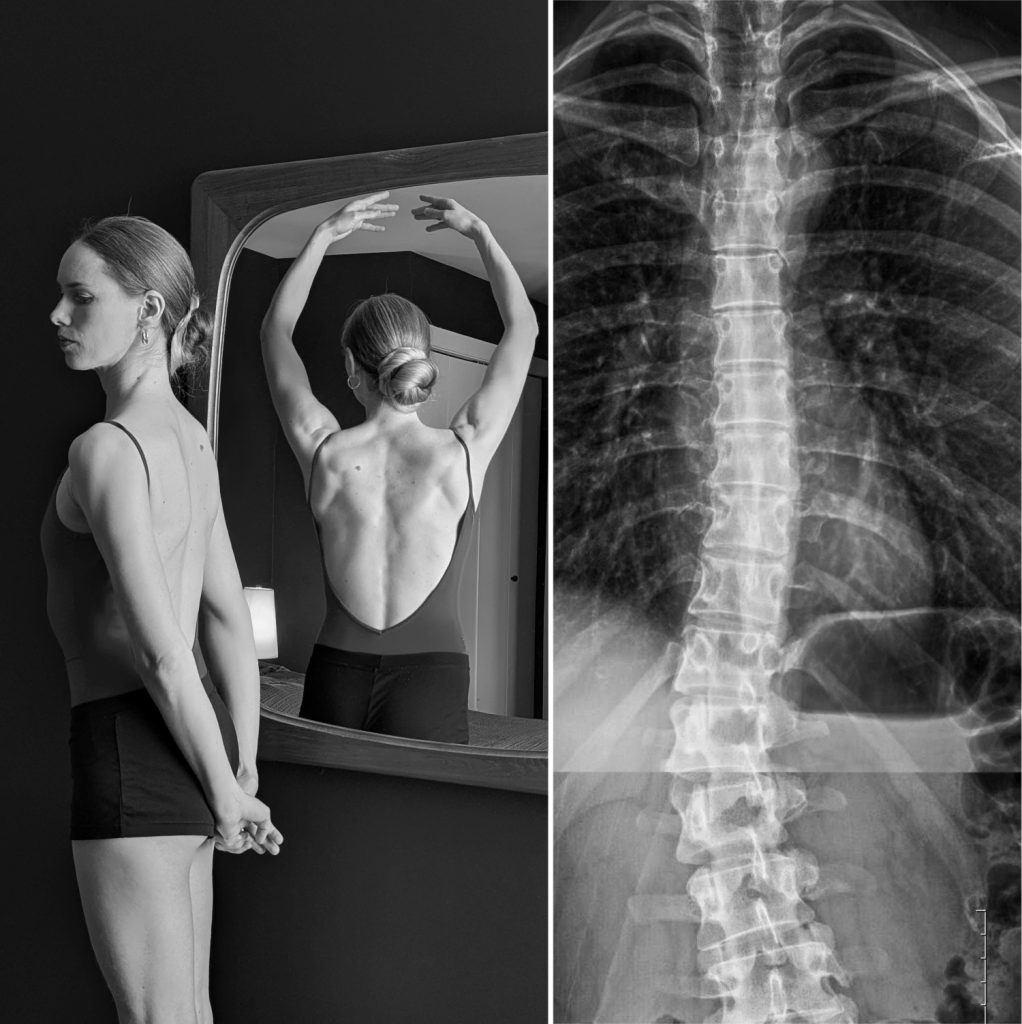
Shedding the Ego
As a dancer, or any type of artist for that matter, we desire the freedom to express ourselves without restraint. But we also need to know our limits. Being able to reign in our creative energy is a skill in itself and it can be a difficult thing to build confidence without ego. Confidence serves to significantly improve our craft but the ego interferes by ignoring our weaknesses and disregarding quality and longevity in favour of instant gratification. The advanced dancers I admired in class – the ones I learned from by observation – had a quiet confidence and a maturity that put the focus on the artistry of dance itself, not on themselves. For others, their dancing came across as a need to impress that left them out of sync with the music and inevitably fostered competitiveness. Competition is a very real aspect of ballet class that is not talked about but is palpable in the air, and it’s something that I can’t deny has affected me at times, as much as I try to stay inwardly focused. It can be motivating and drive you to challenge yourself, but it can also serve as a hindering distraction.
At risk of sounding dismissably spiritual, I believe that we all have energies that we emit into the world and can be felt by those around us. I also believe that, like a reflection from a mirror, what you project outward will come back to you. Cultivating a mindset that is open, vulnerable, genuine, non-judgemental, and inspired by the success of others (as opposed to being jealous) will not only improve creative expression but will attract the positive energy of others. Post-injury, I have felt humbly reminded that when I go to class I am not dancing alone. I’m dancing in a room full of other students all with different backgrounds and at different stages in their dance journey. Upon my return to ballet, though it may sound strange, I would think of my grandparents and my ancestors. Perhaps initially it was a coping mechanism, to believe I had someone there supporting me through the overwhelming fear of re-injury and my ever-present performance anxiety. But as time went on, I began to imagine I was dancing for them, or that somehow they were dancing through me; that they were there in my bones. Purposely exercising this mindset became a helpful technique to get out of my own head, to think less of myself and more about the reason why I am there occupying that space – to share my love of dance with likeminded people.
When you’re forced to slow down, return to beginner level, and practice restraint from your full ability, it becomes an incredibly valuable lesson in identifying and shedding the ego. It teaches you how to strike a balance between letting go for the sake of artistic expression and holding back for the sake of technical precision. It teaches you to focus on your breath, to feel the music in your body, to be present in the moment, and to quiet the self-obsessing brain. All of these lessons act as a reminder that quality exceeds quantity. After all, the world’s greatest dancers are not great because of how flexible they are or how high they can jump, what makes them great is their musicality, their artistry, their control, and their utterly captivating presence on stage or in class. Ultimately, dance is not a lone endeavour or a self-centred practice, it’s an art form that reflects the music and is meant to be shared.
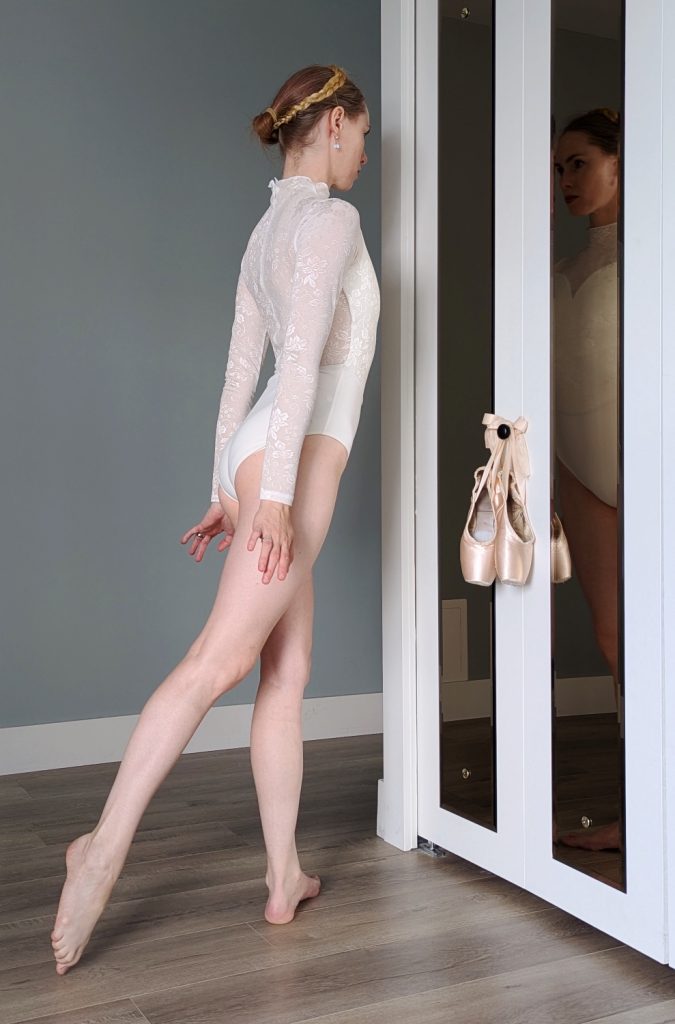
Taking My Medicine
Throughout this lengthy process I’ve felt like the finish line has been moved beyond my reach, but eventually I came to realize that recovery is not a destination. I mistakenly used to think there would be an obvious end point where I’d finish my physio, celebrate its conclusion, and be more or less back to normal. Yes, I did finish my physio, and yes, I did celebrate that milestone by going out for Italian pizza and prosecco with my husband, but I also knew it was not the end. The reality is that this experience has forever changed me and it will be an ongoing hurdle, both physically and mentally. My return to ballet has been as painstakingly slow as the healing process was, making the definitive, happy ending that I was envisioning simply a mirage. Instead, like many things in real life it is a complicated mix of highs of lows, challenges and achievements, and it’s not necessarily a bad thing, it’s just life.
Ballet is a lifelong pursuit, which is part of my attraction to it. It’s incredibly difficult and to improve requires years upon years of dedication, diligence, and patience. As a student of ballet, I continually strive for perfection knowing that I will never come close to achieving it, because there is always something to improve on and because the lessons are boundless. Like ballet, each rocky step I’ve taken throughout this process of rehabilitation has been an opportunity to learn something new, something that permeates beyond the four walls of the studio. So if I could go back and undo this mistake, would I do it? No, I wouldn’t, because every single lesson it’s taught me has made me a stronger dancer (and human), in both body and mind. The simple truth is that sometimes we will inevitably make mistakes, but our mistakes are an opportunity to learn and a prerequisite to growth. As a perfectionist, accepting that truth has been the toughest lesson of all. “Sometimes you have to take your medicine”, my physiotherapist said to me one day. Well, if this injury and all the painstaking physiotherapy was my medicine, then I believe he was right.
I used to view my body as a tool that I could control at will, becoming frustrated by its limitations and by the ‘distraction’ of pain. But the body is not a possession for the mind to conquer, it is one part of a whole that works together in a state of reciprocity. Now I view my body as a gift and I believe that the ability to dance is not a given but a privilege that can be taken away at any point in time – a thought not intended to provoke fear, but simply a reminder to live in the present moment. Our bodies are unique, they’re vulnerable, they’re temporary, and – when you come right down to it – they’re borrowed. Eventually we’ll have to give them back to the universe, so in the meantime we should treat them with kindness and marvel at how extraordinarily resilient they are.
As I went back and forth struggling to find the right title for this piece of writing, I was suddenly reminded of ‘Kintsugi’, which is the Japanese art of repairing broken pottery with gold. The idea is that rather than discarding the broken item or attempting to disguise its imperfections, the cracks are mended with gold to highlight the object’s repair as an important part of its history and a symbolic representation of healing. More than ever, I believe there is a desperate need to collectively reject the simulated images of perfection that dominate our screens and a shift towards embracing our so-called flaws. Because not only does perfection not exist, but the very things that make us unique are part of our story, they cannot be manufactured, and they should not be hidden. As real people in the real world, we all get broken by life sometimes, but then we get up, we adapt, we change, and we heal, carrying our scars with us as a sign of true grit. It’s a bittersweet piece of wisdom that comes out of adversity, the ‘silver lining’ in the storm cloud; that at your lowest there is no option but to rebuild yourself stronger than before.
——
* All writing, artwork, and photography were created by me – a real person in the real world.
